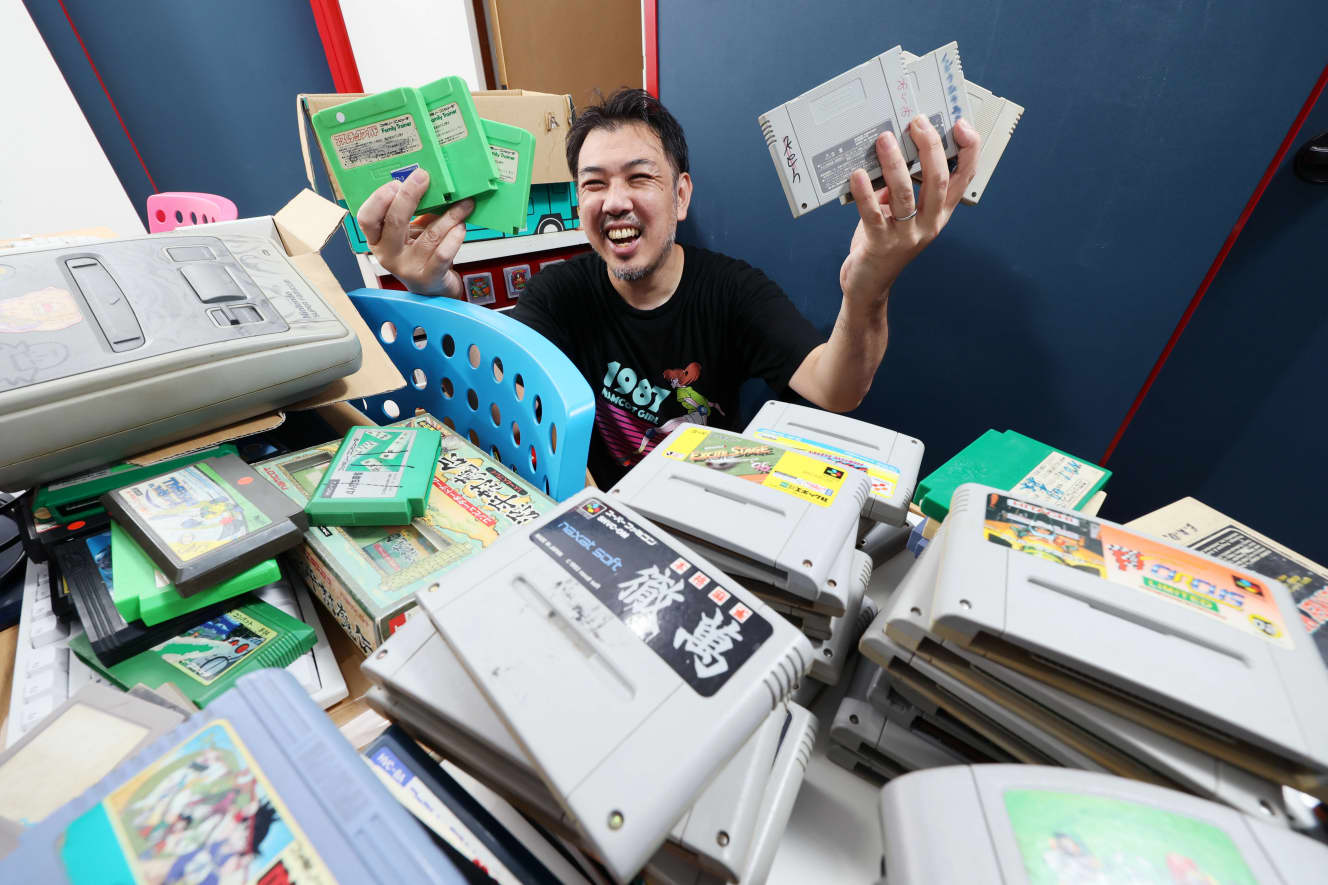The dilemma of the director of a museum of name-card cassettes
Friday's Collecting Genshūgenjin, Vol. 11: "The Museum of Named Cassettes," a collection of articles by Akihito Mimisawa, who has been covering collectors for years.
Why do people collect things? What is at the end of collecting? Friday’s Collecting Genjin” is a collection file that collects collectors. >
If you were in elementary school during the NES boom, you may have written your name on the surface of a game cassette. When you grew up and stopped playing games, you may have sold them along with other unwanted items. And so, cassettes with your name scribbled on them are tossed into cheap wagons at second-hand stores as junk. …… We spoke with Junji Seki, director of the “Cassette Museum with Names, ” which has a collection of about 1,500 game cassettes with the names of unidentified children written on them.
Encountering the first cassette with a name on it
─ Although it is a museum, it does not actually have such a facility, and the cassettes are usually stored at the game development company (Happy Meal Co., Ltd.) run by Mr. Seki. I heard that you are also holding exhibitions at live houses and galleries.
Director Seki Yes, we did a talk event at Asagaya Loft A in 2017, at Izumo Gallery in Waseda in 2018, and a real museum event at Fly High Cafe in Akihabara in 2019.
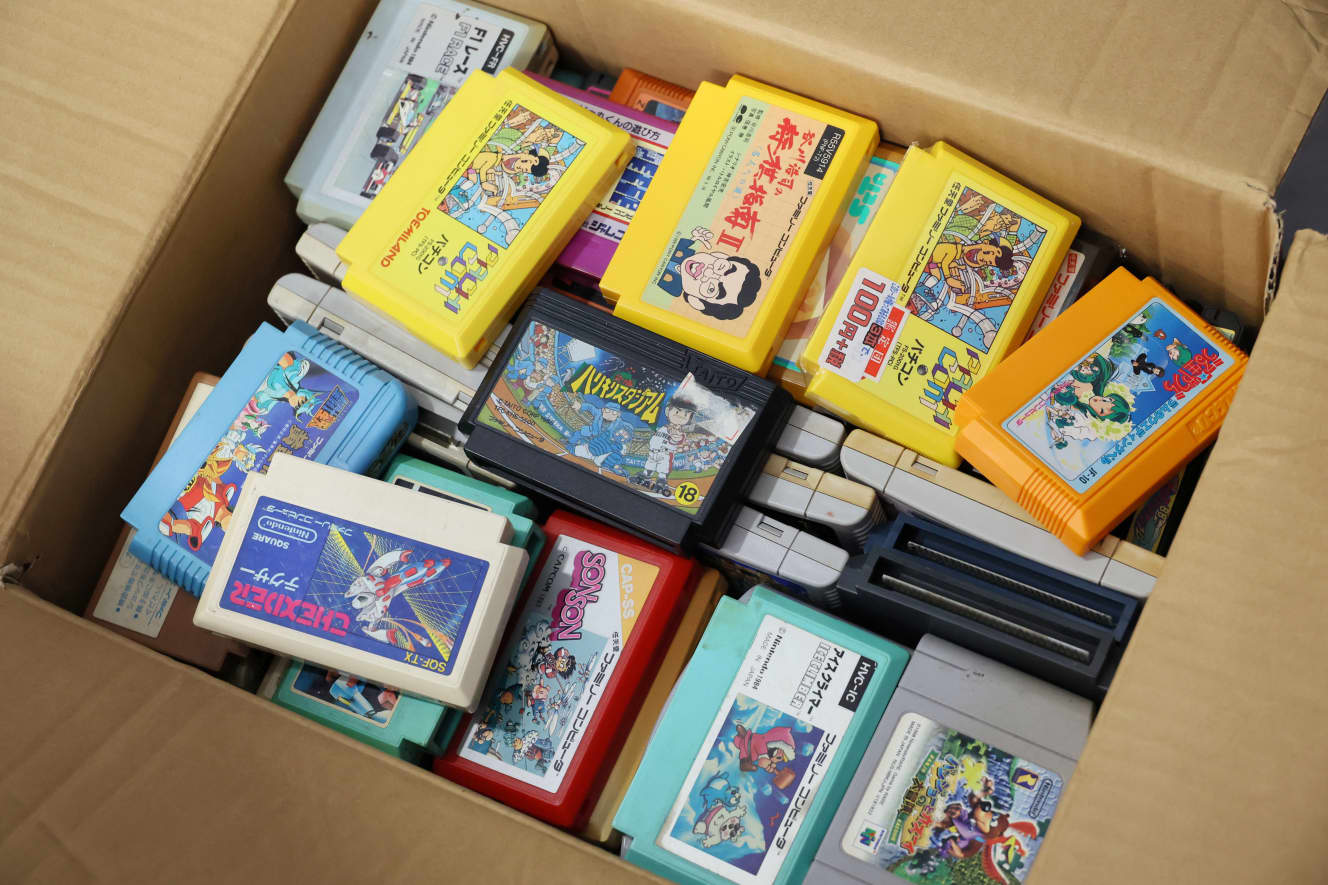
───To tell us how you started collecting these cassettes, before you started collecting “cassettes with your name on them,” you were aiming to complete the NES collection, weren’t you?
Director Seki: I think I started collecting them more than 20 years ago. I was about 20 years old, or something like that.
───Wasn’t there already a number of people who were aiming to complete the NES?
Director Seki: Yes, but the Internet was not as widespread back then as it is now, so I never heard about it.
─ So it was a time when collectors did not yet have horizontal connections or exchange information with each other. So you didn’t start collecting because of someone’s influence or inspiration?
Director Seki: At the time, used NES software was being sold for about 300 yen each, so I bought games at random that I couldn’t afford when I was a child. I found that I had collected quite a lot of games, and I was thinking that I might try to complete all of them anyway.
─ NES software is just right for aiming for completion, isn’t it? I often say that the game balance is good as a collection. The number of games is such that it can be achieved with a little effort.
Director Seki: Yes, there are about 1,200 types of NES software in total, and it is surprisingly easy to collect them all, as they are neither too close nor too far away from completion. There are some software titles that are not for sale, though, and if you include those in your collection, you’ll have a hard time.
─ Ah, like the gold cartridge of “Punch-Out” or the Archimedes version of “Gradius” (laughs). Well, the difficulty of collecting depends on where you set your goal. Anyway, you were collecting NESs, and in the process of collecting them, you noticed that “Oh, there’s a name on it”?
Director Seki: I guess it’s better to have a beautiful product because it’s a collection, after all. I tried to avoid naked cassettes with names written on them, and instead chose clean cassettes, preferably with boxes.
─ ─ That is natural for a collector. But what made you change your mind?
Director Seki: At the time, I was in San Diego, U.S., on a business trip related to games for cell phones. I was visiting a used video game store in the area in between work, and I found a copy of “Link’s Adventure” for the NES (NES for Western countries) with the name “Teresa” written on it, which was probably the name of the original owner. I was very shocked by that.
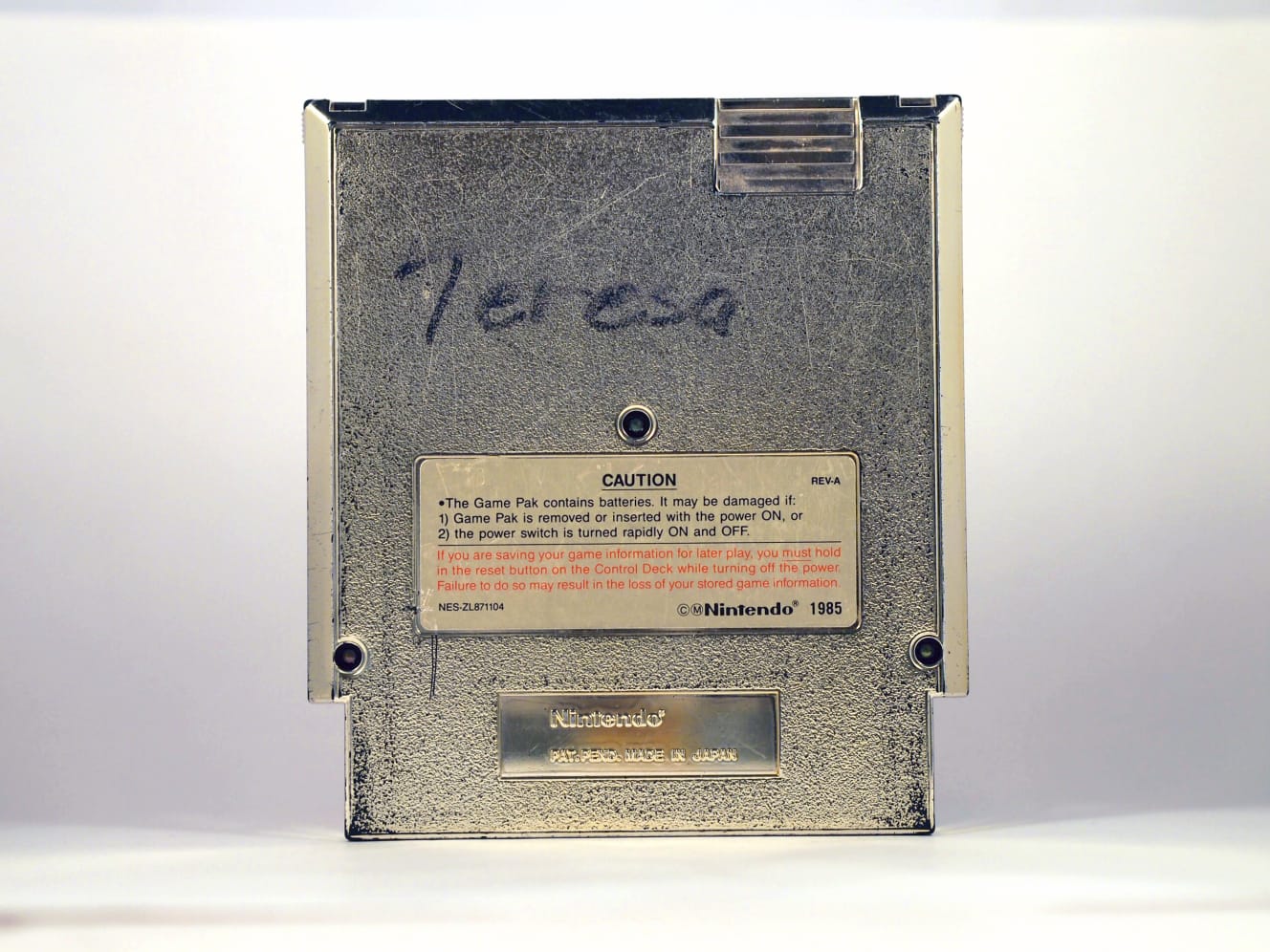
─ Was it really that shocking?
Director Seki: I had assumed that writing names on cassettes was a custom unique to the Japanese. The moment I learned that it was a universal practice, I thought, “This is a bad idea.
─ By the way, how much did Teresa’s “The Adventures of Link” cost?
Director Seki: It was 12.99 dollars, so at the exchange rate at the time, I think it was about 1,500 yen
Ah, that’s not cheap. It’s a price I hesitate to buy used. Does that mean that the shopkeepers saw the value in the fact that it had their names on it?
Director Seki: I don’t think that has anything to do with it. Over there, the only thing that matters is whether or not a used game is playable, and whether or not it has graffiti on it does not affect the price.
─ But Mr. Seki dared to buy it.
Director Seki: No, I didn’t buy it at first. If it had come with a box or something, I might have bought it, but I thought that 1,500 yen for a naked piece was unreasonable. But after thinking about it, I reconsidered and decided to buy it, thinking that this would be a great thing.
─ ─ So that was your encounter with the first cassette with your name on it.
The existence of the “paper” on which the PTA notified people to write their names
Director Seki: As I mentioned earlier, when I started collecting NES cassettes, they cost about 300 yen, which was much cheaper than today, but as the value of used software gradually rose, it became more and more difficult to collect them. Moreover, with the spread of the Internet, I would find out that there were many other people trying to complete their Famicom collections.
─ ─ That would lower your motivation.
Director Seki: I don’t mean to be in competition with anyone, but the passion does wane. That’s when I realized the “with name” approach. In a collection, you want to collect unique items, don’t you?
─ ─ Yes, I understand. To put it another way, the NES cassette, a mass product, becomes one-of-a-kind when it is scribbled on. And if it has your name on it, it’s cheap!
Director Seki: In the Japanese second-hand market, cassettes with names on them are basically treated as junk, so you could buy one for as little as 100 yen.
─ ─ It is just like finding a new vein of ore.
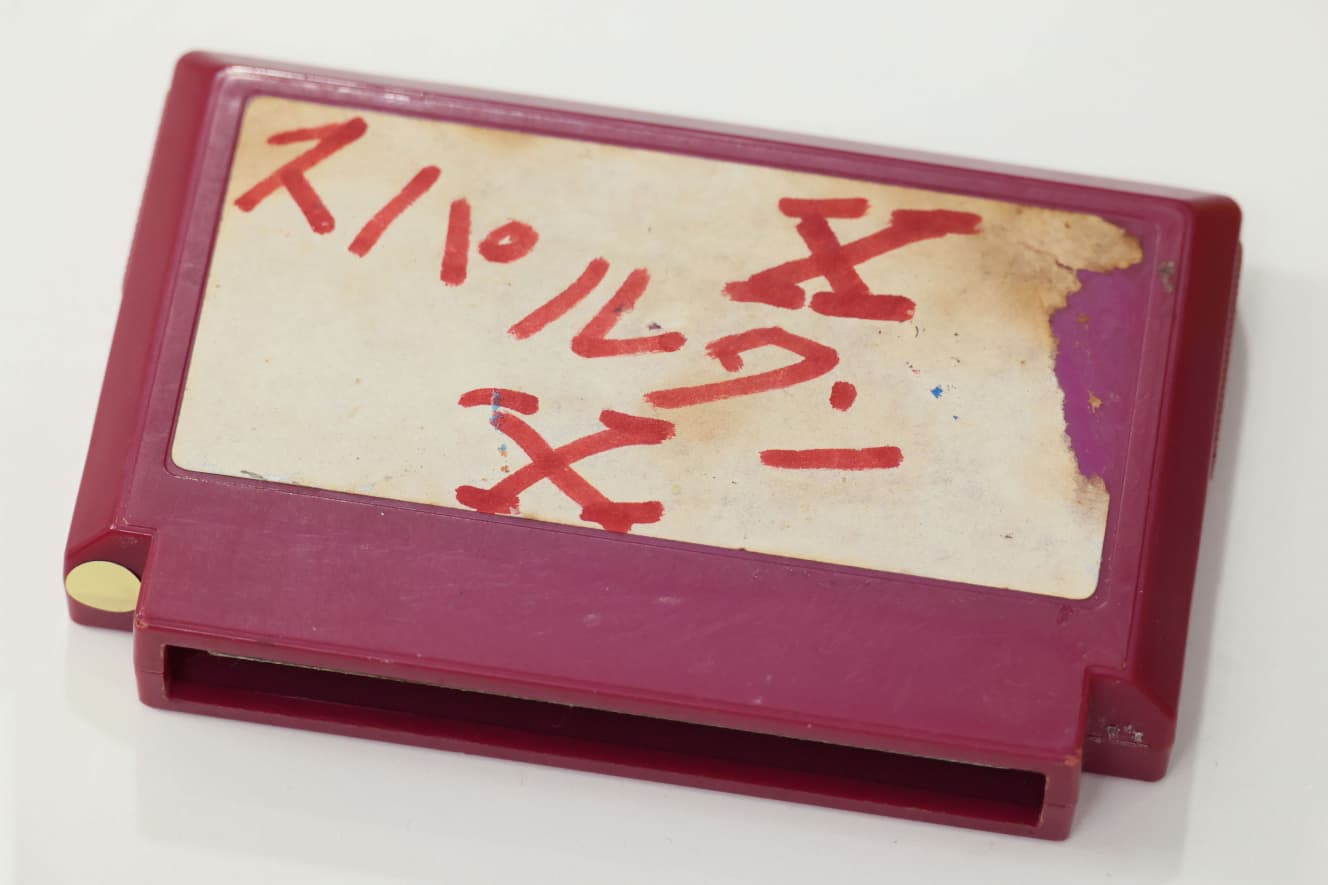
Director Seki: So, I started collecting cassettes with my name on them, while also looking for ones I didn’t own in order to complete the Famicom series.
─ Did you do that by going to used NES stores?
Director Seki: I also went to recycle stores and flea markets. I would go out on my own and buy what I found. It’s not something I collect desperately, so I don’t use online auctions. I’m rather relaxed about it.
─ ─ In the first place, is it that easy to find cassettes with your name on them?
Director Seki: There are plenty of them, and if you go to the 100 yen wagon, you will find a good percentage of them.
─ ─ The Famicom was a rather expensive toy, costing 4,000 to 5,000 yen per unit when bought at regular price. From an adult’s point of view, it would be unthinkable to write one’s name directly on such an important item with a magic marker, wouldn’t it? But since the main users of the NES at that time were children, they would innocently write their names on it.
Director Seki: There are also cases where parents make their children write their names on the Famicom, telling them not to lose it, or where the parents themselves write their names on the Famicom themselves.
─ I see, not everyone has an NES, and people bring cassettes to their friends’ houses to play with them. Did you have to write your name on it for that purpose?
Director Seki: They would lend and borrow cassettes, and since everyone would buy the most popular ones, we would write their names on them or put stickers on them so that no one would know which one belonged to which person. I heard this story from someone who is looking for the origins of the practice of writing names on cassettes.
─ ─ Searching for the roots of cassettes with names!
Director Seki There is a theory that the PTA of some school told the students to write their names, and they are looking for a printout of the notice from the PTA. I think it would be hot to find it (laughs).
(Laughs) ─ Wahaha! I doubt there are any such papers left.
Director Seki: Well, there are various theories as to the origin of the writing of names, and such notifications must have occurred simultaneously in many places.
Not all people want to get their memories back.
───This is how you started collecting NES cassettes with your name written on them, and before you knew it, you were sliding into the “Cassette Museum with Names “, which includes the act of returning cassettes to their original owners. What was the impetus behind this?
Director Seki: From the time we first started collecting the cassettes, we had been thinking about returning them to their original owners.
─ From the very beginning?
Director Seki: That’s right. I felt that I would be happy if I could get the cassettes back (that I had given away).
───Oh, so it would be easier to do that if the cassettes were in a museum setting, where people could see them.
Director Seki: However, to find the owner of a cassette with his/her name on it and return it would be a very tedious task, to say the least, so I was just thinking of doing it someday. However, I had been introduced in several game magazines in the past, and a TV program in the Kansai region saw it and offered to do an interview. Even though it was local to the Kansai region, it was still television.
This was a big exposure for us.
Director Seki: Then, an acquaintance of mine warned me, “If you appear on TV, they will copy you and beat you to it.
─ Ah, so there will be people who say, “I did it before you! I’ve been doing it before you!
Director Seki: We felt that now was the time to communicate our message, so we decided to create a website at the right time, take photos of the cassettes, and upload them as much as possible in the form of a museum.
─ ─ So you were appealing “this is what we are doing” as a pre-existing fact. When I look at the museum’s website, I see that there are several members of the management committee. Are they staff members of the company?
Director Seki: Yes, there are some, but the rest are colleagues in the industry. The museum is basically an individual activity.
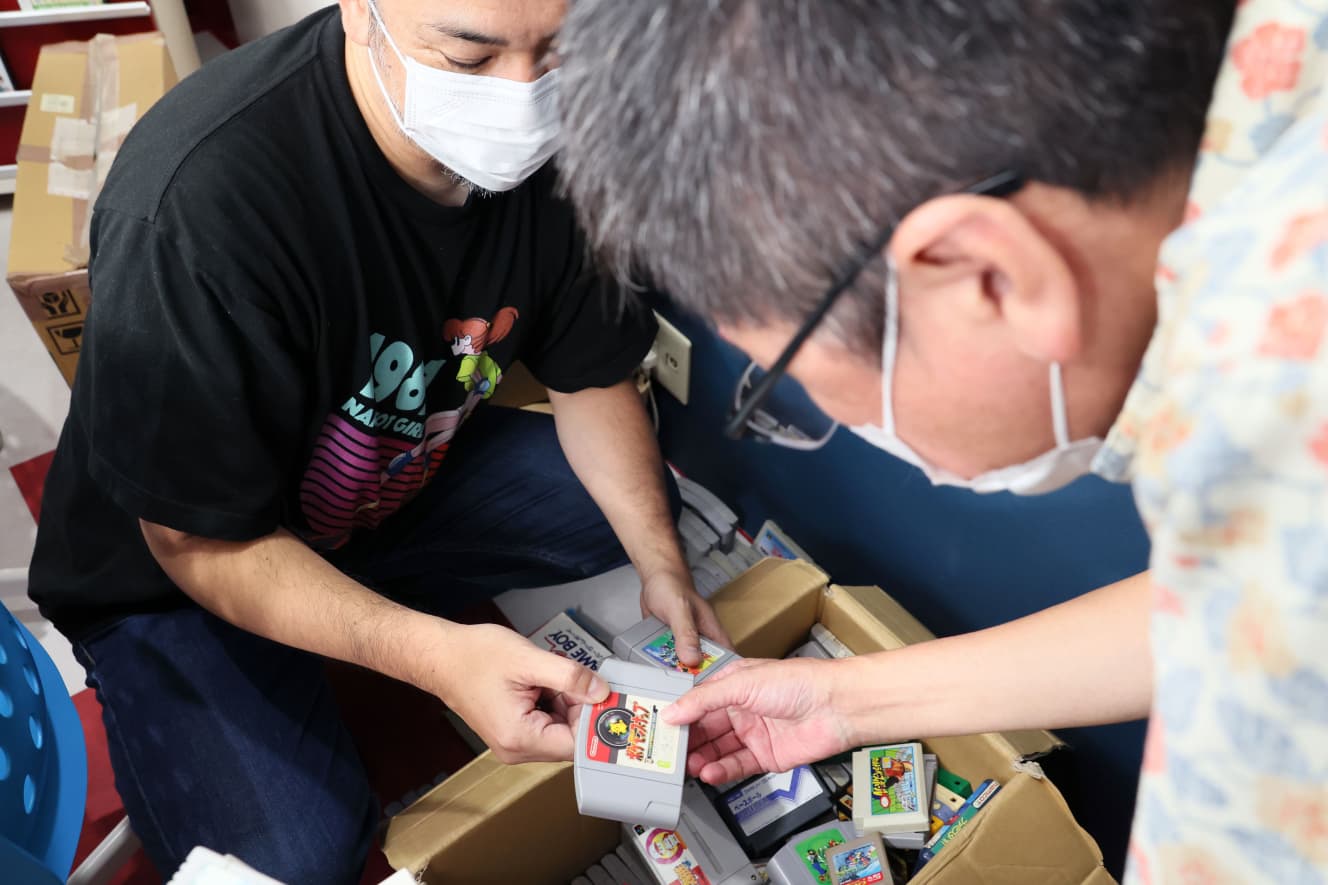
─ I read an article about the return activity linked to several museum websites. According to the report, there were surprisingly few instances of returns being realized, the first being the return of “Ninja Hattori-kun” in 2019. Someone who saw the site came forward and said that the one with the word “Yamaguchi” written in magic pen on the back of the Famikase “might be his” and led to the return. I was wondering if such things happen more often, but isn’t it very recent that the first issue was in 2019?
Director Seki: That’s right. Whenever I receive a contact, I try to contact them, but it ends when they admit that it is mine.
But that’s it? They won’t take it back?
Director Seki: “I’m glad to confirm that it belongs to me” (laughs). There is a difference in temperature between us, who are eager to return the items to their original owners, and the owners themselves.
─ ─ I want to confirm that the item is mine, but that doesn’t mean that I don’t want it back once I’ve given it away. If it were me, I would be very excited if a Famicom with my name on it came back from my childhood (*In reality, I was 25 years old when the Famicom was in its heyday, so I did not write my name on it).
(*In fact, I was 25 years old when the NES was in its heyday, so I didn’t write my name down. (*In fact, I am 25 years old and did not write my name when the NES was in its heyday. In fact, most of them are not.
─ ─ Before I read the article, when I had just learned about the “Cassette Museum with Names,” I was hoping that there would be a touching story, such as a reunion after 30 years with the letters written by your dead mother before her death, but nothing like that, huh?
(Laughs) Director Seki: No, not at all.
─ Well, on the other hand, if there were too many of those heavy reunion dramas, it would be too much for our main business, and it would be difficult.
Director Seki: That’s right. You are right, and if we get too busy with that, it would interfere with our main business.
In addition to names, personal information may also be written on them.
─ Did you yourself write your name when you were a child?
Director Seki: I used to write my number. I don’t really remember why I chose numbers, but I always liked collecting things, or rather, the feeling of having more and more things, so I guess that’s why I numbered them. I was a tight-fisted person, so when I bought something, I took it out of the box, folded the box immediately, and stored it somewhere else.
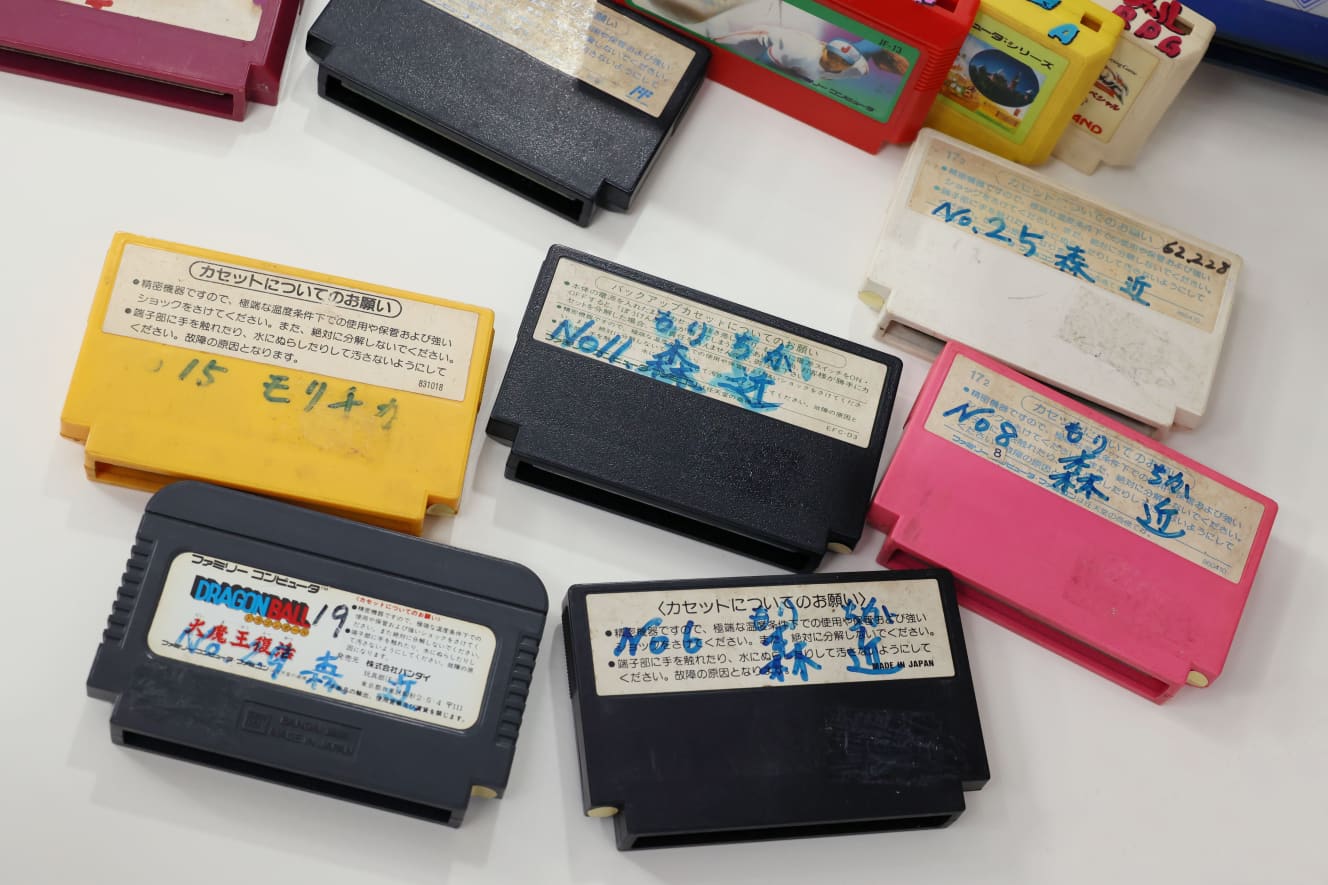
───Do you still have those collections at home?
Director Seki: Some of them are still there, but when I left my NES software to play in the break room at work, some of my part-time workers took them home and never came back.
─ Oh my. Employees have a strong sense of belonging, so it is unlikely that they would borrow company equipment, but I wonder if part-time workers are less aware of this.
Director Seki: This was at a time when NES software was not scarce, so the part-timers probably don’t feel that they are taking valuable items out of the store.
─ ─ Do you have a favorite cassette with your name or doodles on it?
Director Seki: We don’t have everything here, so it’s hard to pick just one. It’s hard to pick one, but please feel free to take one in your hands and look at it.
─ ─ (Rummaging through cardboard boxes) Oh, this one is good! This one, this one, and this one must have been written by the same child.
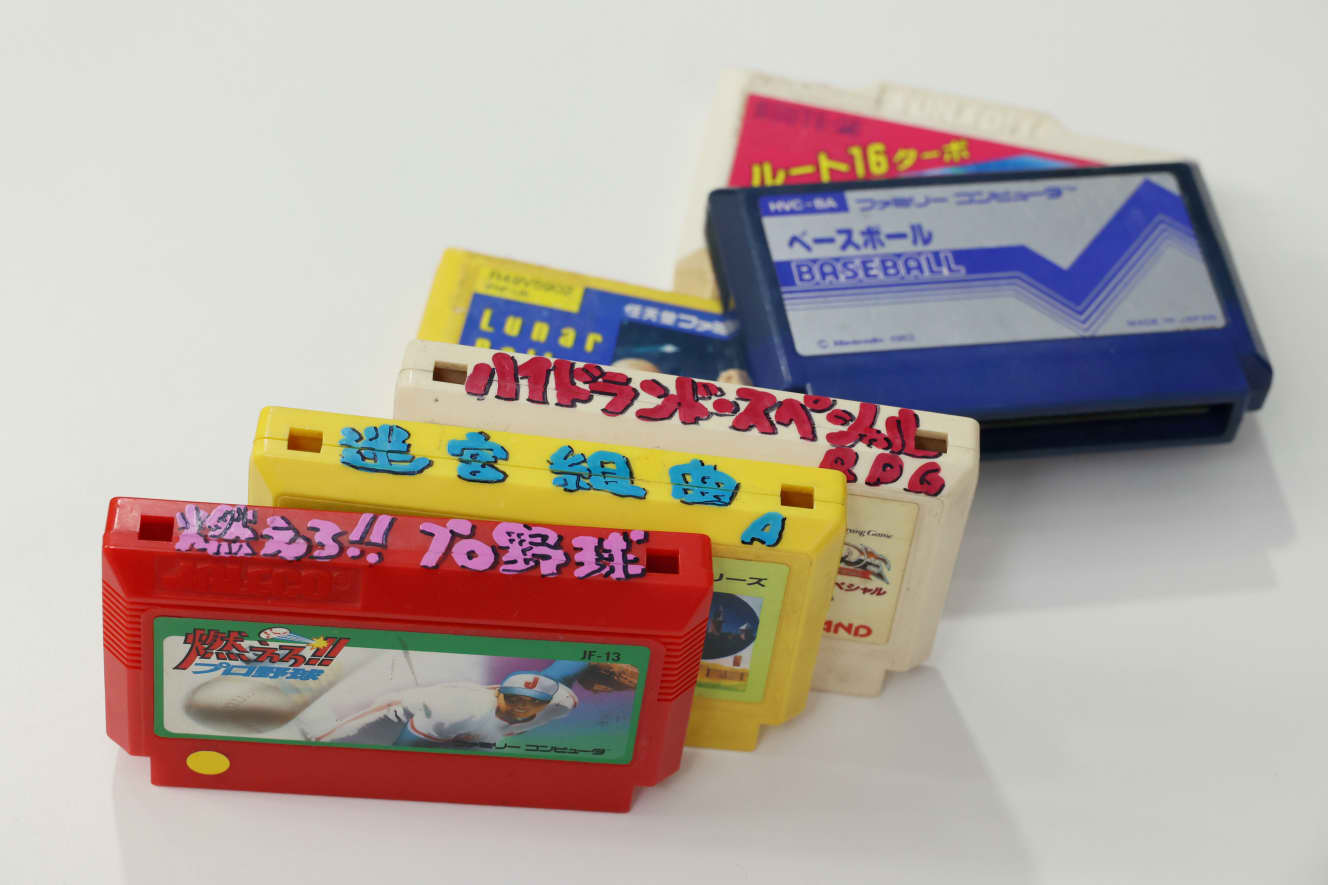
Director Seki: In the same used game store, you may find games that were sold by the same person after a while, and you can tell by the name and the way it is written.
─ ─ Of course, we can recognize children with unusual surnames, but even with ordinary names, we can usually tell by the handwriting.
Director Seki: I can’t show you the photo in the article, but many of them have phone numbers written on them.
─ Ah, so that they can contact you if they lose it. For children, the NES software was such a treasure.
Director Seki: So, if you call this number (if the number is still in use), it is possible to deliver the software to the original owner.
─ Oh, I see!
Director Seki: But we do not contact the owner. For example, the name on the cassette, “××××,” is a rather unusual name, so if you search for it on the Internet, you can probably identify it. But we don’t contact him.
─ ─ I think that is correct. Even if I am doing something well-meaning, from their point of view, “What’s this all about? I think that’s right.
Director Seki: In the Showa period, we were still very careful about handling such personal information. Besides, as I mentioned earlier, not all people want this kind of thing.
Even if the name is not written on the box, is it possible to return the box to the owner through psychic reading?
Director Seki: Another unusual pattern is that the name is not written on the cassette but on the box. It is rare to find a box with a name written on it, but it is rare to find a box in this condition.
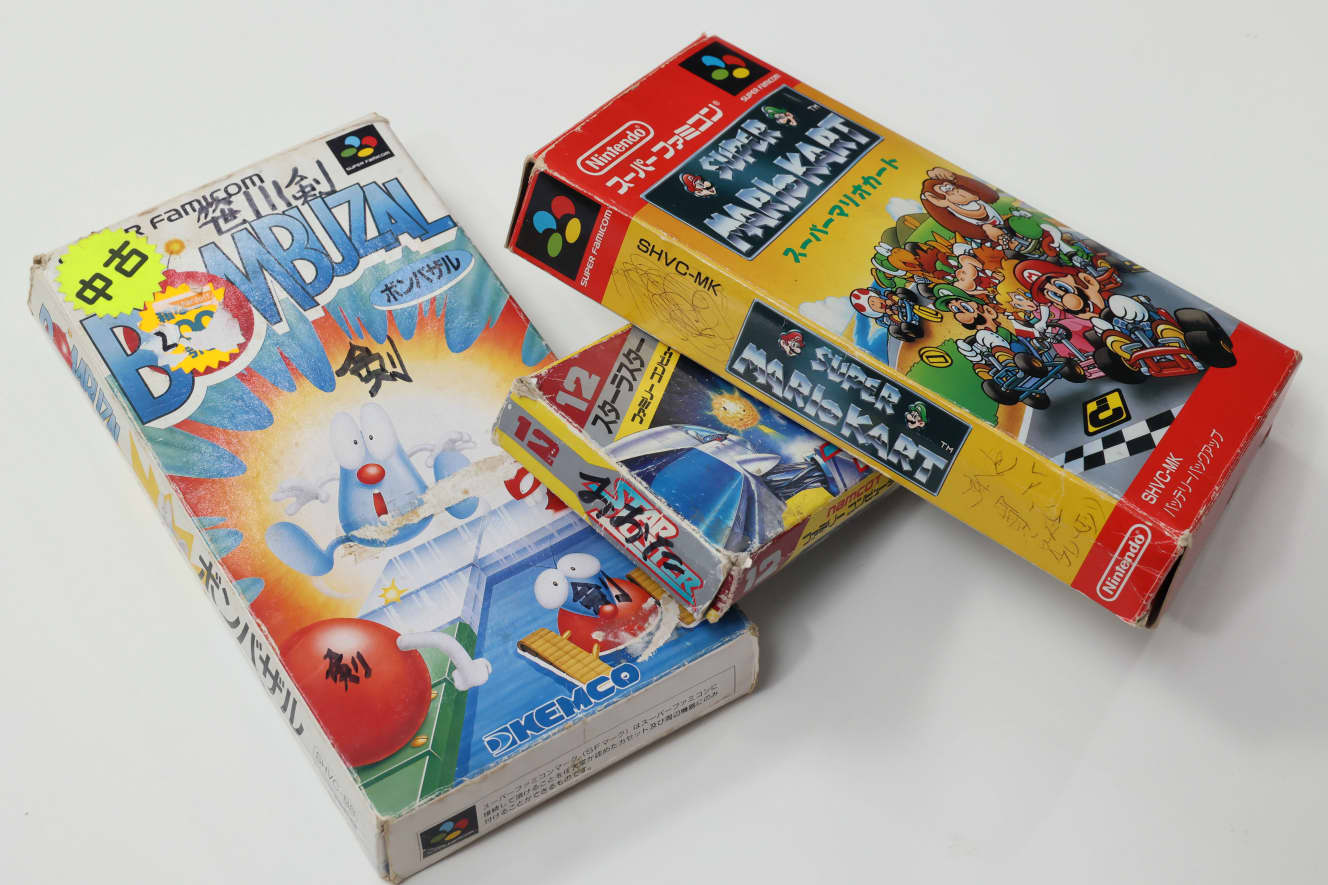
Director Seki: Written on this cassette is a password. The password is written on the cassette itself while the game is still in progress.
I love the audacity of children like this. There were even children who wrote the code for their apartment’s mailbox. Did you find this NES cassette when you went abroad again?
Director Seki: Yes, I did. In the U.S. and Europe.
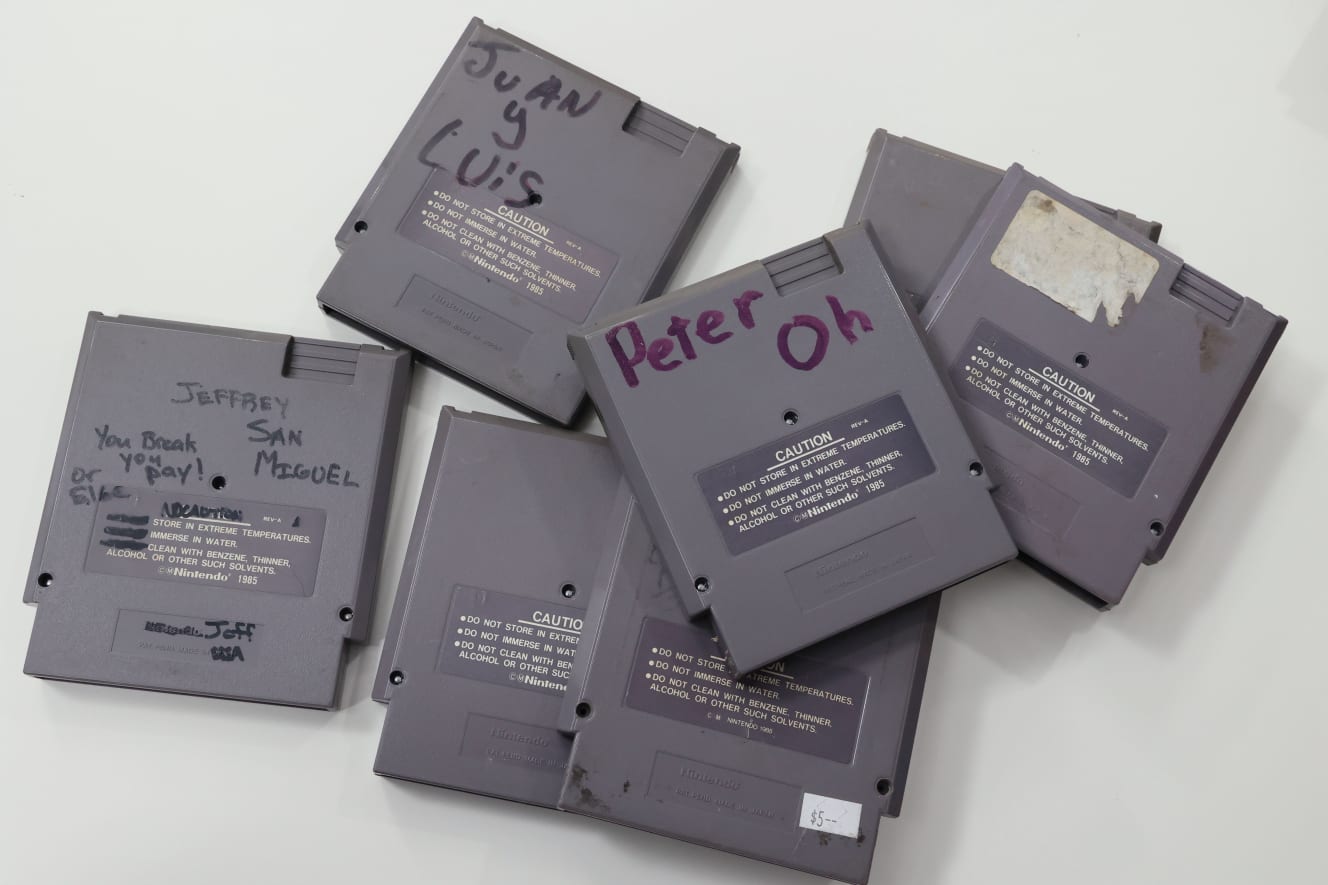
Director Seki: I am friends with Mr. Kato Bakatar, the former editor of “Famitsu,” and I have a friend who can see with his eyes, so I once had him conduct a project to find the owners of these cassettes.
─ ─ Not Mr. Yuriyoi Fukuda (*an eminent divination expert who wrote a series of fortune-telling pages in Famitsu for many years)?
Director Seki: No, it was a different person. He was quite accurate ……, but that depends on how you think about it (laughs). (laughs) I bought this software in the U.S., and when I bought it, the store manager gave me some information about the seller. When I showed the cassette to the psychic, he guessed a little about the owner’s profile.
─ ─ Wahaha, if that is the case, you might be able to return the cassette to the owner even if it doesn’t have his/her name on it.
Where do you see this activity going?
Director Seki: In this day and age, the pros and cons of releasing items with an individual’s name on them are questioned from the standpoint of personal information, and even if there is graffiti on them, the price of used NES software has skyrocketed, so it is becoming difficult to maintain this activity.
───Oh well, this collection is approaching its limits.
Director Seki: Even if we can overcome the price barrier, stores sometimes remove our names from the collection because we can sell them at a higher price if they are made into beautiful pieces.
───Barbaric acts like erasing murals of ancient ruins!
Director Seki: Also, the number of second-hand stores itself is decreasing.
─ ─ I also hear that used Japanese software is beginning to flow to collectors outside of Japan.
Director Seki: That’s right. The problem of software going overseas is a serious one.
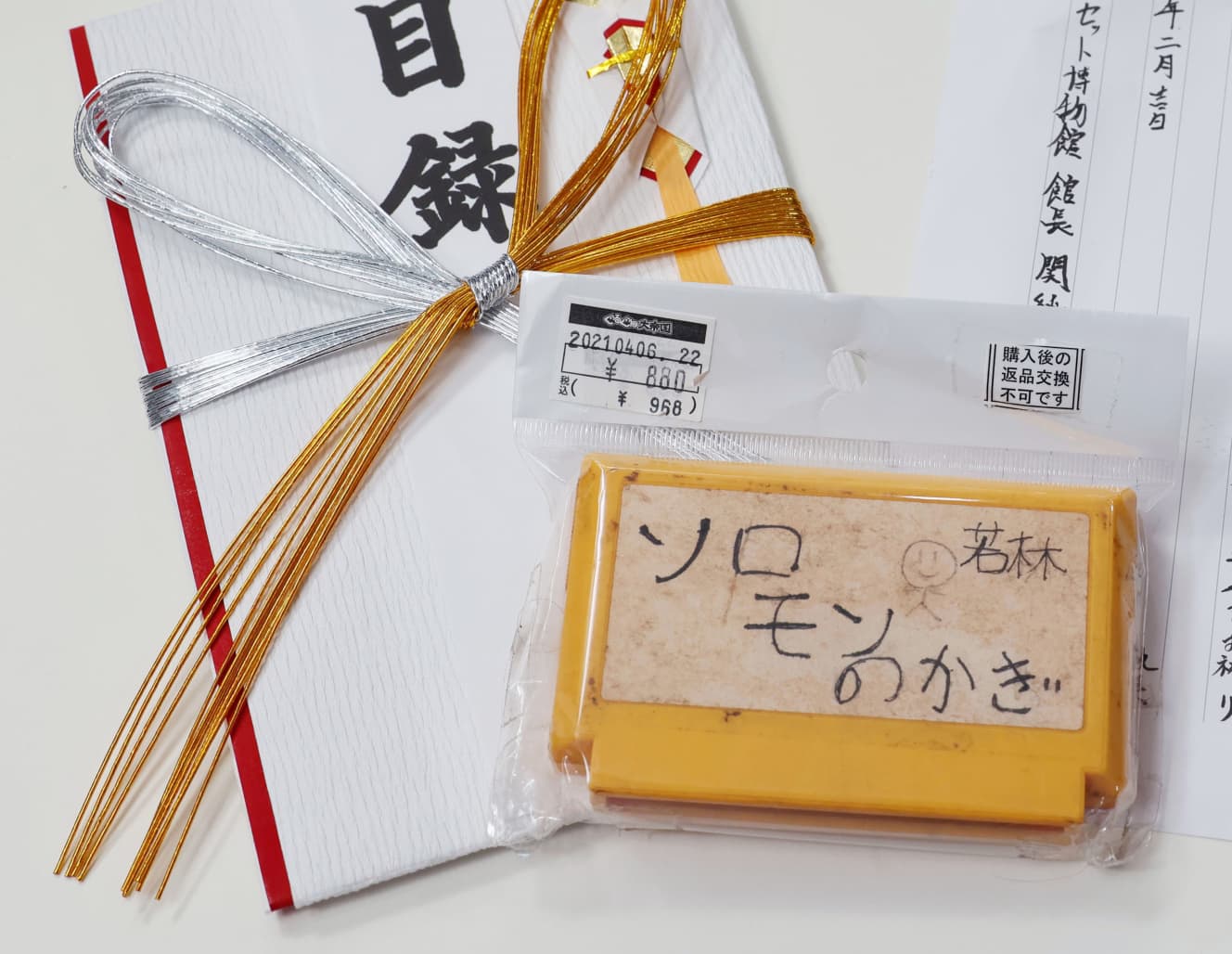
─ ─ This is a question I often ask collectors, “Where does this activity end up?” They say.
Director Seki: Our ultimate goal is to hold exhibitions overseas. It may be difficult to achieve this yet due to the Corona situation.
───I think that holding an exhibition overseas would create a different kind of movement. The starting point was Teresa in San Diego.
Director Seki: I am half joking when I say MoMA (Museum of Modern Art, New York) or Tate Modern (Museum of Modern Art, London), but I think it is an approach that can be taken in places with that level of prestige.
─ ─ No, I think so too. Mero Yamashita of “Fancy Picture Souvenirs,” which I discussed in the second installment of this series, also said that she would like to include the collection in the British Museum in the future. Such a collection is a record of the cultural history of the common people, and I think it would be a great loss to throw it away.
Director Seki: The current collection contains only a few items from overseas, so if we can bolster that collection, we are looking forward to the possibility of “or? I am looking forward to the possibility of “perhaps?
─ ─ I had assumed that the end of this collection would be to return all cassettes with names on them to their owners. But after listening to your talk today, I realize that this is indeed impossible.
Director Seki: That would be impossible.
So, let’s go look for Teresa, the owner of the first one, the North American version of “The Adventures of Link”. If we can return it to her, I feel like we can close the circle of our collection nicely!
What do a 2,000 yen bill and a cassette tape with a name on it have in common?
─ ─ I would like to ask you one last question. I read an article in another media in which you were interviewed that you “collect 2,000-yen bills. What is this about? It is different from saving, isn’t it?
Director Seki: No, it’s kind of hard to get them. It is not widely distributed. So I collect them with the feeling of “I’ll be lucky if they come back to me in some way! I collect them as if they were my own.
─ ─ So you don’t consciously exchange them for 2,000 yen bills, but rather, if they happen to come your way, you leave them unused. How many bills have you collected so far?
Director Seki: I think there are at least 70.
─ Ah, there are more than I thought there would be. Seventy 2,000-yen bills means 140,000 yen alone, which is quite a lot of money.
Director Seki: So they are like a source of comfort, or a source of secret savings. In that sense, it is no different from a savings account (laughs). In that sense, it is no different from a savings account (laughs). But I haven’t seen it in the last few years. I think the last time was about three years ago. Especially now, you don’t use cash anymore, don’t you?
─ Ah, yes, that’s part of it. Credit cards are one thing, but electronic payment has become the norm.
Director Seki: Also, recently, due to the COVID-19 crisis, I have been eating out less and less, and I am spending less and less money.
─ ─ In that light, the 2,000-yen bill collection may be coming to an end, just like the cassettes with names on them.
(After the interview)
As a game designer myself, I thought that if there was a game I had made in the past with my name on it, I could use it as a good punch line for an article. I was told, “I believe there was a ‘Mario and Wario’ game. However, when I went looking for them on site, I couldn’t find them because the quantity was just too large! Even in a museum, records are usually stored in cardboard boxes. In the world of record collectors, there are ways to enjoy collecting records with graffiti on them, but seeing the pile of cassettes with names on them made me rethink the meaning of “one-of-a-kind”.
(This series will be updated on the first Friday of every month. The next installment will be on October 7. Please look forward to it!)
Interview and writing: Akihito Tomisawa
A self-proclaimed professional collector who continues to study the ecology of people obsessed with collecting. He is the author of "Bottomless! The World of Big League Cards" (Sairyusha), "Hitokui Eiga Matsuri" (Tatsumi Shuppan), "MUGEN no Hondana" (Chikuma Shobo), and "Record Koshi no Sengo Shi" (P-VINE), among others. His latest book is "Yusha to Tank to Monster 1978~2018☆My 40 Year History of Video Games" (Komakusa Shuppan), which looks back on his own relationship with video games.
Photography: Katsumi Murata
